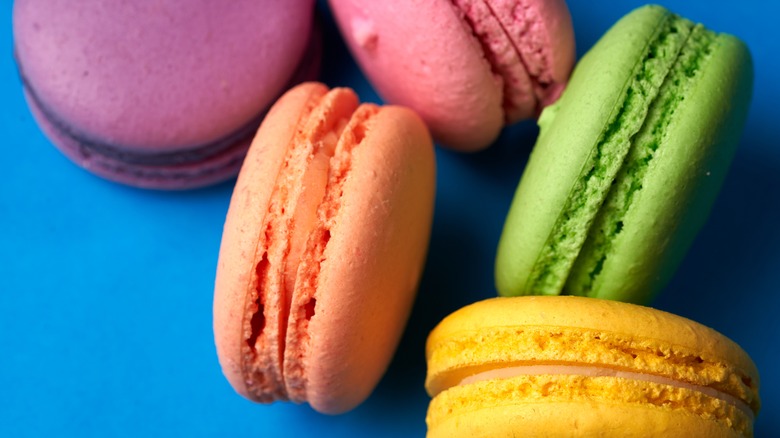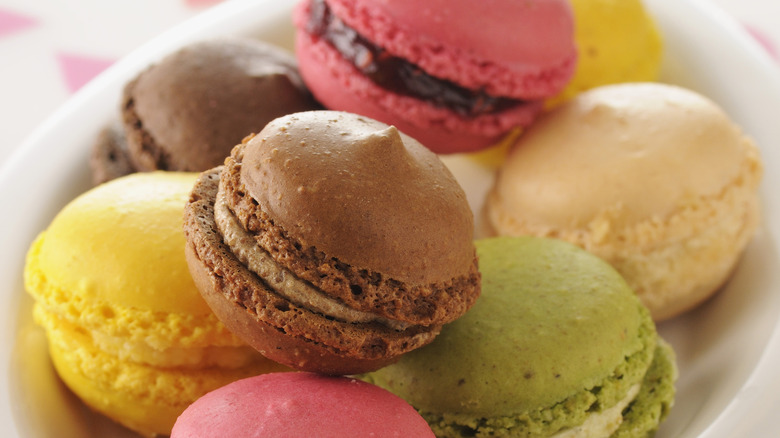Here's What 'Macaronage' Actually Means
In the age of Instagram, TikTok, and other social media, having those picture-worthy moments in life is key, with food and drinks at the top of the list of things people want to show off. Macarons — a sweet French pastry made from almond flour — have become popular on social media because they are colorful, photogenic, as well as delicious. This has helped to popularize these cookie-like treats as an aesthetically pleasing dessert. Macarons also come in a wide variety of flavors, from chocolate and vanilla to matcha and lavender, appealing to a wide range of audiences. Add in that they are gluten-free, and macarons can be enjoyed by more people than desserts made with wheat flour.
The issue, though, is that macarons can be challenging to make because they require a solid understanding of macaronage. This is the technique of combining the dry ingredients with the wet ingredients in order to create the macaron batter. During macaronage, the dry ingredients are folded into the whipped egg whites until a smooth, shiny batter is formed, and this process is important to ensure that the macarons have the proper texture and structure.
What is proper macaron batter?
Macarons should have a smooth surface and small raised edges at the bottom of the cookie, also called feet. Under-mixing the batter during macaronage can result in desserts that have a thick and lumpy surface, with no feet at all, and over-mixing can result in macarons that are thin, cracked, and that won't fluff during the baking process. This is why macaronage is a crucial step in the process of making perfect macarons.
You should test the macaron batter before you put it on a baking sheet. First, you should check that its consistency is like honey. You can also do a figure 8 test by scooping out the batter onto a spatula. Then, allow the batter to drizzle off the spatula and back into the bowl. As it does, make a figure 8 in the air. If the drizzled batter takes longer than 10 seconds to sink back into the larger batch of batter, it's too thick and you need to work the batter some more. If it sinks faster than 10 seconds, it's too thin and the batter has been overworked. If your batter is too thin, you can thicken it with more almond flour and powdered sugar, or by letting the batter rest for a few minutes so that it becomes more viscous.
Knowing when your macarons are done baking
After you get the batter mixed correctly, you can place it into a piping bag and pipe small rounds of batter, about an inch in diameter, onto a greased baking sheet while leaving space between each one. Then, bake them at 300 degrees Fahrenheit for 15-18 minutes. Allow the macarons to cool completely before removing them from the parchment paper. If they stick to the paper, they may not be fully cooked.
Knowing when macarons are done can be tricky, but there are a few signs to look for. The first thing to check is appearance. The macarons should have a uniform shape and size, with a smooth, shiny surface, and they should have a ruffled edge around the bottom (the feet). If they are cracked or have irregular shapes, or if the feet have not formed, they may not be fully cooked. Second, check the texture by gently touching them. If they feel firm and dry, and they do not wiggle or slide around, they are most likely done.


